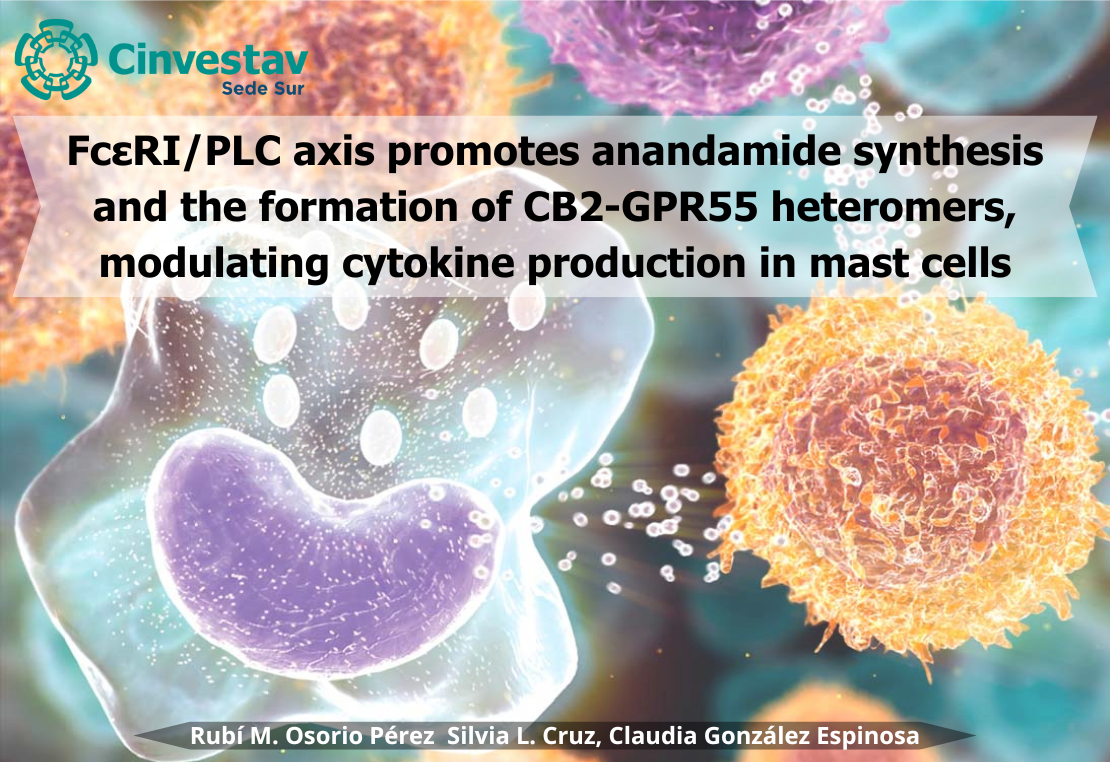Claudia González Espinosa - FcεRI/PLC axis promotes anandamide synthesis and the formation of CB2-GPR55 heteromers, modulating cytokine production in mast cells

27 de enero 2025
Te invitamos a leer el artículo: "FcεRI/PLC axis promotes anandamide synthesis and the formation of CB2-GPR55 heteromers, modulating cytokine production in mast cells", realizado por la Dra. Claudia Gonzalez y la Dra. Silvia Cruz, investigadoras de la Sede Sur del Cinvestav.
Autores: Rubí M. Osorio Pérez Silvia L. Cruz, Claudia González Espinosa.
Abstrac: Mast cells (MC) are crucial effectors in immediate allergic reactions. Monomeric IgE sensitizes MC and triggers various signaling responses. FcεRI/IgE/antigen crosslinking induces the release of several mediators, including bioactive lipids, but little is known about endocannabinoids (eCBs) secretion. Here, we studied the effects of IgEinduced sensitization and FcεRI crosslinking on anandamide (AEA) synthesis and release in bone marrow-derived mast cells (BMMC). Our results showed that mIgE induced AEA secretion through phospholipase C activation. Secreted AEA contributed to p38 phosphorylation induced by mIgE sensitization. Prolonged mIgE sensitization promoted the formation of long-lasting CB2-GPR55 heteromers. FcεRI crosslinking also caused AEA production. Notably, CB2 deficiency increased IL-2 and IL-3 cytokine expression in response to FcεRI crosslinking. CB2 and GPR55 agonists reduced IL-2 and IL-3 mRNA expression caused by FcεRI activation. Our findings suggest that a) IgE binding to FcεRI and its antigen dependent activation leads to an AEA-dependent autocrine regulatory loop that contributes to intracellular signaling in MC and that b) CB2 and GPR55 receptors play a critical role in modulating the effector phase of MC activation by specifically regulating cytokine expression.
Keywords: IgE sensitization , Cannabinoid receptors, ALIA, CB2-GPR55 heteromers, Atopy, Allergy.